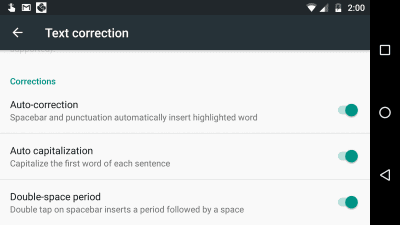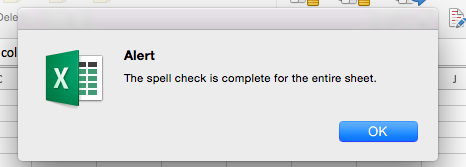
- #Turn auto spell check on excel 2016 how to#
- #Turn auto spell check on excel 2016 upgrade#
- #Turn auto spell check on excel 2016 software#
- #Turn auto spell check on excel 2016 windows#
It includes Classic Menu for Word, Excel, PowerPoint, Access and Outlook 2007. It includes Classic Menu for Word, Excel, PowerPoint, OneNote, Outlook, Publisher, Access, InfoPath, Visio and Project 2010, 2013, 2016, 2019 and 365. Add each word you dont want marked as misspelled and click OK. In the AutoCorrect dialog, check the options as you need.

Click File > Options > Proofing > AutoCorrect Options. If you want to automatically correct the wrong spelling, you can specify the AutoCorrect Options. Select CUSTOM.DIC then click the Edit Word List button. Check spelling and correct automatically with AutoCorrect Options. Step 4: Click the Proofing tab at the left side of the Word Options window. Click on the Custom Dictionary button in the Word options window. Step 3: Click the Options button at the bottom of the left column. Step 2: Click the File tab at the top-left corner of the window.
#Turn auto spell check on excel 2016 how to#
How to Turn on Automatic Spell Check in Word 2013. Step 1 Click the Review tab and then click the Spelling & Grammar button. Follow the steps below to Turn on the spell check in Settings. A dialog box will then highlight all misspelled words, and you can.

#Turn auto spell check on excel 2016 windows#
Without any training or tutorials after upgrading, users can work with Office 2007/2010/2013/2016 immediately On Windows systems, Microsoft has provided the Spell Check tool for users to check the spelling and grammar in Microsoft Office, such as Word 2016. In PowerPoint, go to the Review tab and right on to Spelling & Grammar or Spelling.All new features and commands of Office 2007, 2010, 2013, 2016, 2019 and 365 have been added to the menus and toolbars.
#Turn auto spell check on excel 2016 upgrade#
The classic view helps the people to smoothly upgrade to the latest version of Office, and work with Office 2007/2010/2013/2016 as if it were Office 2003 (and 2002, 2000). It brings back the classic menus and toolbars to Microsoft Office (includes Word) 2007, 2010, 2013, 2016, 2019 and 365.
#Turn auto spell check on excel 2016 software#
The software Classic Menu for Office is designed for the people who are accustomed to the old interface of Microsoft Office 2003, XP (2002) and 2000. You can do the following things on this tab of the dialog box. If the Classic Menu for Office is not installed, please click Review tab > Proofing group > Spelling and Grammar. A new window called Auto Correct will appear. If you have installed Classic Menu for Office to bring back the familiar user interface and make it look like Word 2003/XP(2002)/2000, just click Tools > Spelling and Grammar.ĭ: If the Classic Menu for Office not installed Click on Proofing from the left-hand side Click on AutoCorrect Options. If you want to locate its position on ribbon, please see following content.Ĭ: If the Classic Menu for Office installed If you need, just press F7 to call Spelling and Grammar function. If you are using Classic Menu for Office, click Tools > Word Options > Proofing. Please click File tab in Word 20 (or click the Office button in Word 2007) > Word Options > Proofing. The automatic Spell Check function might be disabled sometimes and users could reactivate it.
AutoCorrect also converts common text shortcuts into their. You have to be quick to see it in action.
For example, in Word you can't type the word mispell (with only one s). • Classic Menu for Office 2007 Applications
The AutoCorrect feature in Word 2016 fixes hundreds of common typos and spelling errors on-the-fly.
Select Proofing, then check the box next to Hide spelling errors in this document only and Hide grammar errors in this document only, then click OK.

If you're sharing a document like a resume with someone, you might not want that person to see the red and blue lines. To hide spelling and grammar errors in a document:

If you've turned off the automatic spelling and/or grammar checks, you can still go to the Review tab and click the Spelling & Grammar command to run a new check. For example, if you don't want Word to mark spelling errors, grammar errors, or frequently confused words automatically, simply uncheck the desired option. From here, you have several options to choose from. On the left side of the dialog box, select Proofing.


 0 kommentar(er)
0 kommentar(er)
